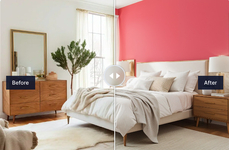
The Psychology of Color Explains What Different Colors Mean to People
Gil Cohen — March 22, 2013 — Art & Design
References: nowsourcing & paintersoflouisville
Subconsciously, everything we see affects the way we feel and think, making the psychology of color an important factor in understanding how to change people's perceptions based on visual acuity.
When it comes to painting the home or the office, certain colors can make each room have a completely different atmosphere. For example, blue is associated with productivity while, green with tranquility and red with appetite. According to this infographic, "studies show that red can make you do poorly on exams" and pink is used in prisons "to initially calm inmates."
Clearly, colors have a huge impact on our way of thought, which is why brands pay special attention to the colors they use in their campaigns and logos based on the psychology of color.
When it comes to painting the home or the office, certain colors can make each room have a completely different atmosphere. For example, blue is associated with productivity while, green with tranquility and red with appetite. According to this infographic, "studies show that red can make you do poorly on exams" and pink is used in prisons "to initially calm inmates."
Clearly, colors have a huge impact on our way of thought, which is why brands pay special attention to the colors they use in their campaigns and logos based on the psychology of color.
Trend Themes
1. Psychology of Color - Companies can leverage the psychology of color to create effective branding and marketing strategies.
2. Color-based Room Design - Designers can create specific atmospheres within a space by carefully selecting colors based on their associated emotions and meanings.
3. Color and Human Perception - Research can continue to explore the impact of color on human psychology and behavior to provide valuable insights for various industries.
Industry Implications
1. Marketing and Advertising - Developing color-based brand and advertising strategies can give companies a competitive advantage in the marketplace.
2. Interior Design - Interior designers can use the psychology of color to curate the look and feel of a space to meet the needs and desires of clients.
3. Education and Psychology - Further research on the connection between color and human perception can provide valuable insights for improving learning environments and mental health treatments.
3.8
Score
Popularity
Activity
Freshness























